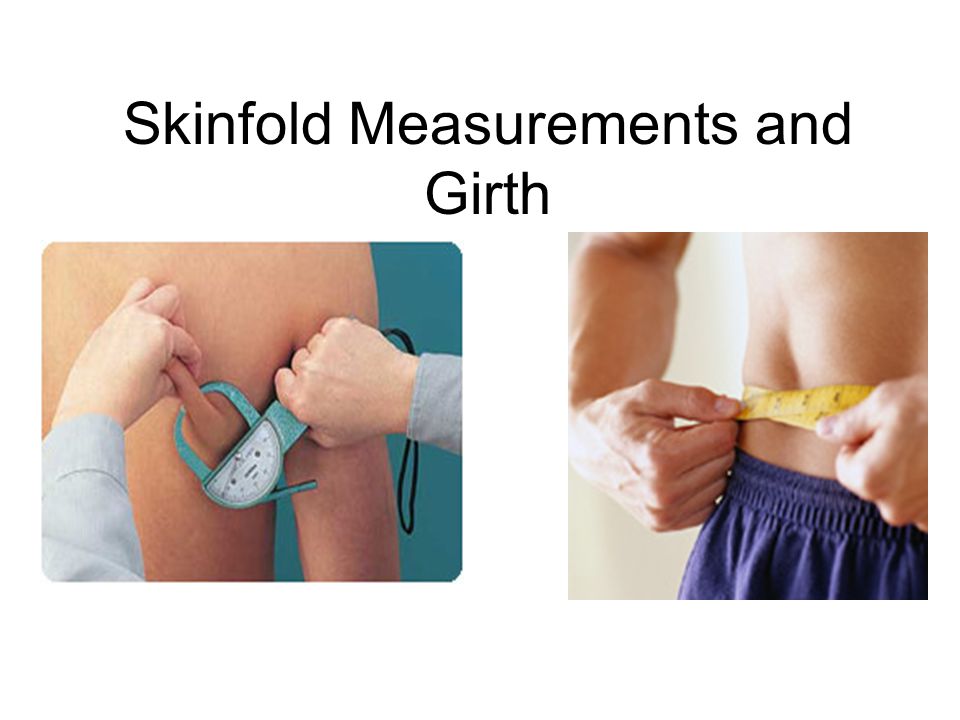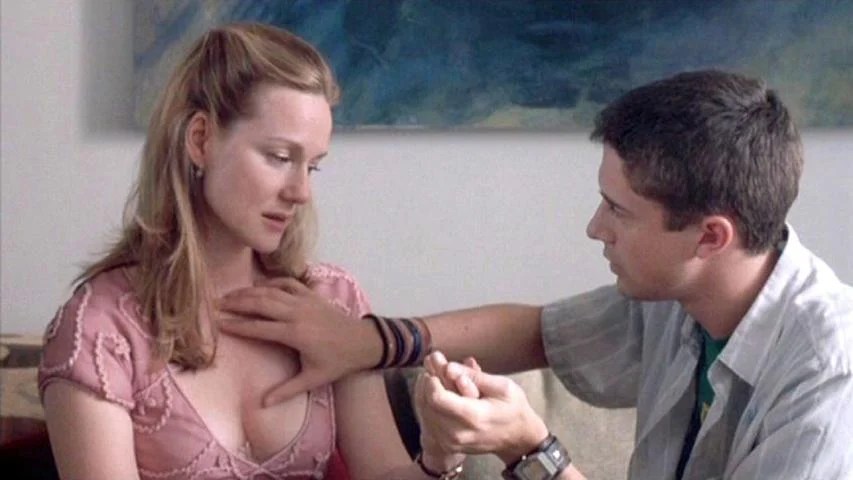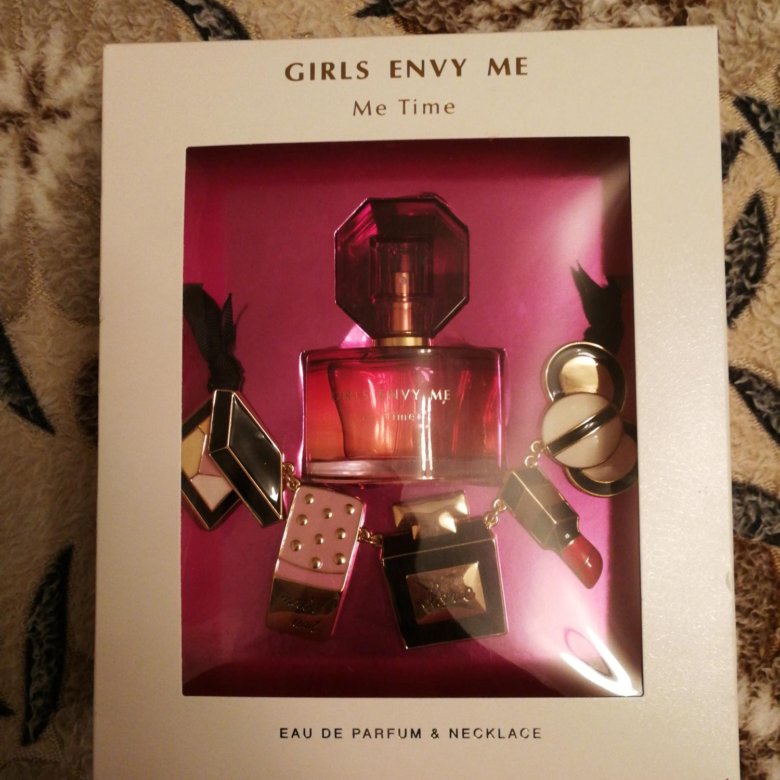How to play ritual dance on guitar
Ritual Dance tab with lyrics by Kaki King for guitar @ Guitaretab
Ritual Dance as performed by Kaki King Tabbed out by Lars Spangenberg Since there is not a lot of tabs online for this that actually present the whole thing I tried to give it a shot. I hope it helps everyone. There's certain parts where i'm not entirely sure about what exactly Kaki king is doing but since i could not find any videos of her actually playing the piece and i can't really get anything out of the August Rush part. I think most of this is accurate though. Tuning: DADGCC / or \ Slide h Hammer on p Pull off ~ vibrato x mute (also used it for the drum part at the end) T Right hand tapping | L Left hand tapping | located above S Slap above fretboard or soundhole | tablature staff ss Slap below fretboard or soundhole | ( ) Natural harmonics S and () Slap harmonics with right hand Intro Riff:Let ring-------------| Let ring--------------------| Let ring S SC|--(5)--------------------------(12)------------------------------(5)-|C|--(5)--------------------------(12)------------------------------(5)-|G|--(5)--------------------------(12)------------------------------(5)-|D|--(5)--0h4-3-3-3/5-5-5-5-5p0---(12)--0-0-0h4-3-3-3/5-5-5-5-5p0---(5)-|A|--(5)--0h4-3-3-3/5-5-5-5-5p0---(12)--0-0-0h4-3-3-3/5-5-5-5-5p0---(5)-|D|--(5)--0h4-3-3-3/5-5-5-5-5p0---(12)--0-0-0h4-3-3-3/5-5-5-5-5p0---(5)-|
---------------------| Let ring----------|SC|------------------------------(12)---------------------------||C|------------------------------(12)---------------------------||G|------------------------------(12)--------------------0------||D|--0-0-0h4-3-3-3/5-5-5-5-5p0---(12)--0-0-0h4-3-3-3/5-5-0------||A|--0-0-0h4-3-3-3/5-5-5-5-5p0---(12)--0-0-0h4-3-3-3/5-5-0------||D|--0-0-0h4-3-3-3/5-5-5-5-5p0---(12)--0-0-0h4-3-3-3/5-5-0------||
Riff 2 (play 2x):Let ring ----------|C||--2-2/5-5-5-/7-0-------x-0------------||C||--2-2/5-5-5-/7-0-------2-0------------||G||o-2-2/5-5-5-/7-0-------2-0-----------o|| x2D||o--------------0-3-3-3-3-3-3--/5-0---o||A||---------------0-3-3-3-3-3-3--/5-0----||D||---------------0-3-3-3-3-3-3--/5-0----||
Let ring-----|C|-9-9-12-12-x-x-4--4-4-4-4-------------0--0-0--2-------------||C|-9-9-12-12-x-x-4--4-4-4-4-------------0--0-0--2-------------||G|-9-9-12-12-x-x-2--2-2-2-2--0-7--7-7-7-7--0-0--2-------------||D|---------------2--2-2-2-2--0-8--8-8-8-8---------0-0-0-0-0-0-||A|---------------------------0-8--8-8-8-8---------0-0-0-0-0-0-||D|---------------------------0-8--8-8-8-8---------0-0-0-0-0-0-||
Riff 3:C||-5-x-4-x-2-x-0------------------------------x--------------|C||-5-x-4-x-2-x-0--------------0---------------2----------2p0-|G||-7-x-5-x-2-x-0-2--2-2-2p0-0-0---2-2-2-2p0-0-2--2-2-2-2-2p0-|D||-------------3-3--3-3-3---3-3---3-3-3-3---3-3--0-0-0-0-0---|A||-------------3-3--3-3-3---3-3---3-3-3-3---3-3--0-0-0-0-0---|D||-------------3-3--3-3-3---3-3---3-3-3-3---3-3--0-0-0-0-0---|
Let ring-------------|C|-5-x-4-x-2-x-0--------------------------------------------------------||C|-5-x-4-x-2-x-0--------------0-----------------------------------------||G|-7-x-5-x-2-x-0-2--2-2-2p0-0-0---2-2-2-2p0-0-2--2--/5~~~~/7~~~~--------||D|-------------3-3--3-3-3---3-3---3-3-3-3---3-3--0-0-0-0-0-0-0-0-0-0-0--||A|-------------3-3--3-3-3---3-3---3-3-3-3---3-3--0-0-0-0-0-0-0-0-0-0-0--||D|-------------3-3--3-3-3---3-3---3-3-3-3---3-3--0-0-0-0-0-0-0-0-0-0-0--||
Riff 4:Let ring------| Let ring-----|C||-------------------0----------------------------0----------|C||-------------------0----------------------------0----------|G||-----------------------4---------------------------4-------|D||-1-1-1-1-3-3-3-3-5---------5--1-1-1-1-3-3-3-3-5-------5----|A||-1-1-1-1-3-3-3-3-5------------1-1-1-1-3-3-3-3-5------------|D||-1-1-1-1-3-3-3-3-5------------1-1-1-1-3-3-3-3-5------------|
Let ring------| C|-------------------0---------------0-0-0-0-0-0--||C|-------------------0---------------0-0-0-0-0-0--||G|-----------------------4-----------0-0-0-0-0-0--||D|-1-1-1-1-3-3-3-3-5---------5---x-x-7-7-7-7-7-7--||A|-1-1-1-1-3-3-3-3-5-------------x-x-7-7-7-7-7-7--||D|-1-1-1-1-3-3-3-3-5-------------x-x-7-7-7-7-7-7--||
Riff 5 (Riff 2 modified/tapped): Let ring----------------------------------------------------------L T T L T L T ss L T T L T L T ssC|--2p0-5p0-7p0--------------------2p0-5p0-7p0---------------------|C|--2p0-5p0-7p0--------------------2p0-5p0-7p0---------------------|G|--2p0-5p0-7p0--------------------2p0-5p0-7p0---------------------|D|------------------7p0----------------------------7p0-------------|A|-----------------------------------------------------------------|D|--------------3p0-----7p0-12p0---------------3p0-----7p0-12p0----|
---------|T T Let ring-----| C|-9p0-12p0-4--4-4-4-4--5-x-4-x-2-x-0-x-2-------------|C|-9p0-12p0-4--4-4-4-4--5-x-4-x-2-x-0-x-2-------------|G|-9p0-12p0-2--2-2-2-2--7-x-5-x-2-x-0-x-2-------------|D|----------2--2-2-2-2--------------------0-0-0-0-0-0-|A|----------------------------------------0-0-0-0-0-0-|D|----------------------------------------0-0-0-0-0-0-|
Let ring----------------------------------------------------------L T T L T L T ss L T T L T L T ssC|--2p0-5p0-7p0--------------------2p0-5p0-7p0---------------------|C|--2p0-5p0-7p0--------------------2p0-5p0-7p0---------------------|G|--2p0-5p0-7p0--------------------2p0-5p0-7p0---------------------|D|------------------7p0----------------------------7p0-------------|A|-----------------------------------------------------------------|D|--------------3p0-----7p0-12p0---------------3p0-----7p0-12p0----|
---------|T T Let ring-----| C|-9p0-12p0-4--4-4-4-4--5-x-7-x-9-x-12-x-14-------------|C|-9p0-12p0-4--4-4-4-4--5-x-7-x-9-x-12-x-14-------------|G|-9p0-12p0-2--2-2-2-2--5-x-7-x-9-x-12-x-14-------------|D|----------2--2-2-2-2----------------------0-0-0-0-0-0-|A|------------------------------------------0-0-0-0-0-0-|D|------------------------------------------0-0-0-0-0-0-|
Riff 6: On this part the rythm is all tapped with the left hand and the bass notes and harmonics with the right hand.Let all of the harmonics and bass notes ring. the rythm might not be that accurate in this but ou should be able to figure it out by listening to the piece.
L T L L...etc. S S L C|--------------------------------------(12)----(5)-3p0-------|C|--------------------------------------(12)----(5)-3p0h4p0h4-|G|-0h4p0h4p0h4p0h4p03p0h4p0h4p0h4p0h4p0h4p0h4p0h4p0-----3p0h4-|D|-0h4p0h4p0h4p0h4p03p0h4p0h4p0h4p0h4p0h4p0h4p0h4p0-----------|A|-----3-------3-3-------p0-----------------------------------|D|-----3-------3-3-------p0-----------------------------------|
S SC|------------------------------------(12)----(5)--------|C|------------------------------------(12)----(5)--------|G|-3p0h4p0h4p0h4p03p0h4p0h4p0h4p0h4p0h4p0h4p0h4p0h4p0h4p0|D|-3p0h4p0h4p0h4p03p0h4p0h4p0h4p0h4p0h4p0h4p0h4p0h4p0h4p0|A|---3-------3-5-------p0--------------------------------|D|---3-------3-5-------p0--------------------------------|
The last part i am not very confident about because it is a lot of random sounds.It sounds like she drums with her right hand fingers on the 12th fret. Make sure to hold your hand almost horizontal to the fretboard (or around 45 degrees), stiffen your fingers, and drum with your finger tips on the fretboard. my ringfinger usually hits the harmonics on the top strings and the index finger hits random notes on the bass strings.It should sound like you alternate between between harmonics and mute strings. Occasionally she hits the 12the fret with the side of her index finger in an upward mostion to denote the harmonics. The left hand keeps on tapping the rythm for a little bit. The percusion slaps on the guitar i do with my left hand above the fretboard followed by a beat with the thumb on my right hand. After this essay I just wrote, let me try to paint the picture by tapping it out. But like I said it's mostly random the tablature will not perfectly match. mutes and high frets are done with right hand and low frets with left hand. chords marked with the * are the denoted harmonics on the twelfth fret;.

T * S S * S SC|--------(12)----------------(12)-----------------(12)----|C|--(12)--(12)---------(12)---(12)----------(12)---(12)----|G|--(12)---------------(12)-----------------(12)-----------|D|------------x--------------------x--0----------------x---|A|3-----x-----x--5----------x------x--0---------x------x---|D|3-----x--------5----------x---------0---------x----------|
* S S *S S * S S(C|------(12)-----------------(12)--------(12)---------(12)-------(12)-----|C|-(12)-(12)--------(12)-----(12)--------(12)---(12)--(12)-(12)--(12)-----|G|-(12)-------0-----(12)-0----------------------(12)-------(12)-------(12)|D|----------x-0----------0--x-----0-----x-----------x-----------x-----(12)|A|-----x----x-0----x-----0--x-----0-----x-----x----3x-----x--5--x----x----|D|-----x------0----x-----0--------0-----------x----3------x--5-------x----|
*S S *S S * S S C|------(12)-----------------(12)------(12)--------(12)----0-0----------||C|-(12)-(12)--------(12)-----(12)------(12)--(12)--(12)-0--0-0----------||G|-(12)-------0-----(12)-0-------------------(12)-------0--0-0----------||D|----------x-0----------0--x-----0--x------------x-----0--0-0----------||A|-----x----x-0----x-----0--x-----0--x-----x------x-----0----0----------||D|-----x------0----x-----0--------0--------x-----------------0----------||
I hope this helps.If you have any questions or corrections please email me.
Chord: Ritual Dance - Michael Hedges - tab, song lyric, sheet, guitar, ukulele
4 years ago528 Beyond Boundaries: Guitar Solos (2001) Michael Hedges
-- 0⇣⇡1⇣⇡2⇣⇡3⇣⇡4⇣⇡5⇣⇡6⇣⇡7⇣⇡8⇣⇡9⇣⇡
Received: from solstice.unr.edu ([134.197.40.101]) by undergrad.math.uwaterloo.ca with SMTP id ; Thu, 23 Jun 1994 15:20:06 -0400
Received: from equinox.unr.edu (equinox.ccs.unr.edu) by solstice.unr.edu (4.1/1.34)
id AA06031; Thu, 23 Jun 94 12:19:54 PDT
Received: from pyramid (pyramid.cs.unr.edu) by equinox.unr.edu (4.1/1.34)
id AA28942; Thu, 23 Jun 94 12:19:54 PDT
Received: from echo by pyramid (5.65/1.34)
id AA13865; Thu, 23 Jun 1994 12:19:52 -0700
Received: by echo.cs.unr.edu (5.65/Ultrix3.0-C)
id AA19692; Thu, 23 Jun 1994 12:19:52 -0700
To: Dean Gaudet
In-Reply-To:
Message-Id:
Mime-Version: 1.0
Content-Type: TEXT/PLAIN; charsetUS-ASCII
Status: OR
"Ritual Dance" by Michael Hedges
As Transcribed (at least attempted) by Rob McAlister
This is meant as a guide as the strummings are difficult to write out. 12-----------------------------|
12-----------------------------|
|--------------------------------------------------------------|
|--------h4-3-3-3s5-5-5-5p0-0---------h4-3-3-3s5-5-/-12--0-----|
|--------h4-3-3-3s5-5-5-5p0-0---------h4-3-3-3s5-5-/-12--0-----|
|--------h4-3-3-3s5-5-5-5p0-0---------h4-3-3-3s5-5-/-12--0-----|
| |_|_| |_|_|_| |_|_|_| | |_|_| | |_|_|_| | | |
fig. A
|-2-/5-5-7-0-------------------2-/5-5-7-0--------------------|
|-2-/5-5-7-0-------------------2-/5-5-7-0--------------------|
|------------------------------------------------------------|
|------------h4--3-3s5-5-5--0-------------h4-3-3s5-5-5--0----|
|------------h4--3-3s5-5-5--0-------------h4-3-3s5-5-5--0----|
|------------h4--3-3s5-5-5--0-------------h4-3-3s5-5-5--0----|
| |_|_|_| | | |_| |_| | | |_|_|_| | | |_| |_| |
fig. b |-9----12-0-2-4----------0-0-2---0-0-2--------2--5-5-7-0---------------|
|-9----12-0-2-4----------0-0-2---0-0-2--------2--5-5-7-0---------------|
|---10------------------------0h4----------------------------2p0--0----|
|----------------2-2-2-2s0--------------0--0-------------h4-3-s-5-5--0-|
|----------------0-0-0-0-0-1------------0--0-------------h4-3-s-5-5--0-|
|----------------------------------0----0--0-------------h4-3-s-5-5--0-|
|-2--5-5-7-0-----------------9----12-0-2-4---------0-0-2---0-0-2--|
|-2--5-5-7-0-----------------9----12-0-2-4---------0-0-2---0-0-2--|
|----------------2p0--0--------10-----------------------0h4-------|
|------------h4-3-s-5-5--0-----------------2-2-2-2s0--------------|
|------------h4-3-s-5-5--0-----------------0-0-0-0-0-1------------|
|------------h4-3-s-5-5--0-----------------------------------0----|
fig. c (play twice)
c (play twice)
||------5-4-2-0-------------------------------------------5-4-2-0------------|
||------5-4-2-0-------------------------------------------5-4-2-0------------|
||-------------0-2-2-2-2-0---0-2-2-2-2-0----2-2-2----------------0-2-2-2-2-0-|
||-0--0--------3-3-3-3-3-3---3-3-3-3-3-3--2-3-3-3-3-2-0-0--------3-3-3-3-3-3-|
||-0--0--------3-3-3-3-3-3---3-3-3-3-3-3--0-3-3-3-------0--------3-3-3-3-3-3-|
||-0--0--------3-3-3-3-3-3---3-3-3-3-3-3--0-3-3-3-------0--------3-3-3-3-3-3-|
fig. d (not quite right but similar)
|---------------------0--2--||----------------------0------------------------|
|---------------------0--2--||----------------------0------------------------|
|-0-2-2-2-0----2-2-2--------||------------------------4-0--------------------|
|-3-3-3-3-3--2-3-3-3--2--0--||-h2-1-1-1s3-3-3-3s5-5-------h2-1-1-1s3-3-3-3s5-|
|-3-3-3-3-3--0-3-3-3--------||-h2-1-1-1s3-3-3-3s5-5-------h2-1-1-1s3-3-3-3s5-|
|-3-3-3-3-3--0-3-3-3--------||-h2-1-1-1s3-3-3-3s5-5-------h2-1-1-1s3-3-3-3s5-|
|---0---------------------------0------h7-7-7-------7-7-7------------|
|---0---------------------------0------h7-7-7-------7-7-7------------|
|-----4-0-------------------------4-0--h7-7-7-------9-9-9------------|
|-5--------h2-1-1-1s3-3-3-3s5-5--------h7-7---7-7-7--------0-0-------|
|-5--------h2-1-1-1s3-3-3-3s5-5--------h7-7---7-7-7--------0-0-------|
|-5--------h2-1-1-1s3-3-3-3s5-5--------h7-7-- 7-7-7--------0-0-------|
After playing up to this point, play: fig. 12-----------------x--||
12-----------------x--||
|------------------------------------------------------x--||
|--------h4-3-3-3s5-5-5-5p0-0-0-0---------h4--3-3s5-5--x--||
|--------h4-3-3-3s5-5-5-5p0-0-0-0---------h4--3-3s5-5--x--||
|--------h4-3-3-3s5-5-5-5p0-0-0-0---------h4--3-3s5-5--x--||
Received: from desire.wright.edu ([130.108.128.200]) by undergrad.math.uwaterloo.ca with SMTP id ; Mon, 11 Jul 1994 21:49:43 -0400
Received: from desire.wright.edu by desire.wright.edu (PMDF V4.2-10 #2485) id
; Mon, 11 Jul 1994 21:48:45 EDT
Resent-To:
To: [email protected]
Errors-to: [email protected]
Resent-message-id:
Message-id:
X-VMS-To: IN%"[email protected]"
MIME-version: 1.0
X-Mailer: Z-Mail-SGI (3.0S.1026 26oct93 MediaMail)
Content-type: text/plain; charsetus-ascii
Content-transfer-encoding: 7BIT
Status: RO
Content-Length: 1781
Ok, Hedgers and Hedgehogs, I've got a question. For years I've been working on
my own deconstruction of Ritual Dance, one of my favorite pieces.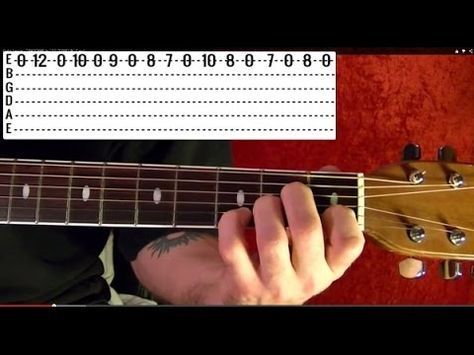 It amazes me
It amazes me
how much goes on in that song in only 2:18 or so.
One part of the song has given me particular trouble. I'm hoping that there
may be a few others out there who've also tried to decode it, and can offer me
some guidance.
The piece in question is a small part of the end of the "verse" (for want of a
better term) portion. The "verse" is to me the main
figure which goes something like (forgive my lack of tab experieince; I've
probably condensed some time signatures and failed to indicate some repeated
notes):
2-55-7-0 - - ------2-55-7-0------------12-0-2-4-----
2-55-7-0 ---- - ---2-55-7-0------------12-0-2-4-----
2-55-7-0 - ---- ---2-55-7-0------------10-----2 ----
--------333--555-0----------333--555-0-10-----2 2222
--------333--555-0----------333--555-0--------------
--------333--555-0----------333--555-0--------------
>From here, one approach goes:
00-------2
00-------2
55-7-----2
33-5--00-0
00-55-33-0
00-55-00-0
Whereas another goes:
00-2--00-2
00-2--00-2
00-3--00-2
00-0--00-0
00-------0
00-------0
This may not be decipherable, but I'm curious what turn your deconstruction of
the piece takes at this point?
MH does this piece so quickly he seems like a blur at this juncture.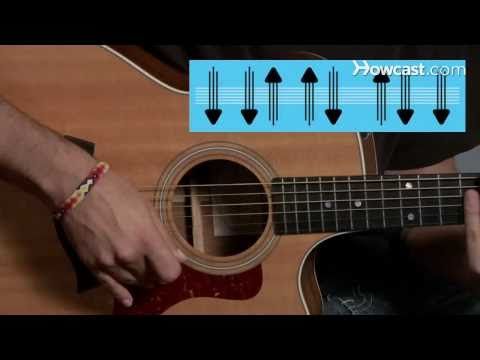 He seems
He seems
to be doing something on the lower 3 strings around the 7th or 8th fret, but
the recording, it also sounds possible that he is doing different figures at
this juncture later in the piece.
I have a gig next Wednesday, and I'm toying with doing this piece, so any
timely advice would be much appreciated. Many thanks!
- Ken
Received: from watserv2.uwaterloo.ca ([129.97.128.100]) by undergrad.math.uwaterloo.ca with SMTP id ; Thu, 15 Dec 1994 10:51:17 -0500
Received: by watserv2.uwaterloo.ca id ; Thu, 15 Dec 1994 10:50:59 -0500
Received: from crusher.gan.nf.doe.ca ([131.235.20.4]) by watserv2.uwaterloo.ca with SMTP id ; Thu, 15 Dec 1994 10:50:32 -0500
Received: by crusher.gan.nf.doe.ca
(1.37.109.4/16.2) id AA03105; Thu, 15 Dec 94 15:50:49 GMT
X-PH(3.13)-To: [email protected]
To: [email protected]
Mailer: Elm [revision: 70.85]
Message-Id:
Status: OR
In this transcription I didn't bother marking the percussive
tapping of the top and sides of the guitar.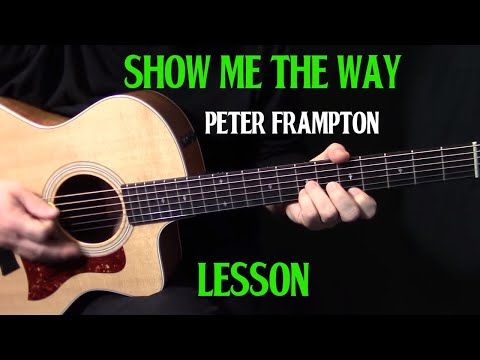 Where it goes,
Where it goes,
everyone knows.:-)
I've tried to pay particular attention to sections 'E'and 'J'
where some discrepancies in interpretation seem to exist.
There is also an inferred slide in section 'A' between the 5th fret
and open string notes stopping somewhere, anywhere, between the
8th and 12th fret.
The end at section 'M' has a simultaneous pick attack with the pull
off to produce the big glorious noise.
Note regarding section 'J': the barred "pull-off" starts at the
heaviest string and works its way down successively. Each note is
played quickly making a BARRUMPF sound. The same applies in sections
'E' and 'M'.
Ritual Dance
Tuning - DADGCC
Roadmap - A,B,C,E,F,C,E
G,H,G,I,G,H,G,I
J,J,J,K,B,C,E
G,H,G,I,G,H,G,I
J,J,J,K,F,D,E,D,E
L,A,M
Keycode - (number) - harmonic
(letter) - section name
> - slide
H - hammer on
P - pull off
(A)
|-(3)--------------(5)--------------(9)--------------(12)-------------|
|-(3)--------------(5)--------------(9)--------------(12)-------------|
|-(3)--------------(5)--------------(9)--------------(12)-------------|
|-----3-333-5-55-0-----3-333-5-55-0-----3-333-5-55-0------3-333-5-55--|
|-----3-333-5-55-0-----3-333-5-55-0-----3-333-5-55-0------3-333-5-55--|
|-----3-333-5-55-0-----3-333-5-55-0-----3-333-5-55-0------3-333-5-55--|
(B)
|-2->55->7-0--------------2->55->7-0-------------|
|-2->55->7-0--------------2->55->7-0-------------|
|-2->55->7-0--------------2->55->7-0-------------|
|-----------3-3-3--5-5-0------------3-3-3--5-5-0-|
|-----------3-3-3--5-5-0------------3-3-3--5-5-0-|
|-----------3-3-3--5-5-0------------3-3-3--5-5-0-|
(C) (D) (E)
|-9--|---(12)-|-0-2-4-444-P2P0----------0-2-22-|
|-9--|-9------|-0-2-4-444-P2P0----------0-2-22-|
|-10-|--10----|-0-2-2-222---P0---7-7----0-2-22-|
|----|--------|---2-2-222---P0--8-88-P0------0-|
|----|--------|-----0-000-------8-88-P0------0-|
|----|--------|-----------------8-88-P0------0-|
(F)
|-2->55->7-0--------------2->55->7-0-------------|
|-2->55->7-0--------------2->55->7-0-------------|
|-2->55->7-0---2P0--0-----2->55->7-0---2P0--0----|
|------------3-----5-5-0-------------3-----5-5-0-|
|------------3-----5-5-0-------------3-----5-5-0-|
|------------3-----5-5-0-------------3-----5-5-0-|
(G) (H) (I)
|-5-4-2-0------------------------|------|-0--2-|
|-5-4-2-0------------------------|------|-0--2-|
|-2-2-2-0-0-h3-2--0-h3-2--0-h3-2-|-0--2-|-0--2-|
|---------3----3--3----3--0----0-|----0-|----0-|
|---------3----3--3----3--0----0-|----0-|----0-|
|---------3----3--3----3--0----0-|----0-|----0-|
(J) (K)
|--------------------|-77-77-7-|
|--------------0-----|-77-77-7-|
|---------------4-0--|-77-77-9-|
|-1-3>5-3P0-55-------|-77-77-7-|
|-1-----3P0-55-------|-77-77-7-|
|-1-----3P0-55-------|-77-77-7-|
(L) (M)
|----------0-2----------0-2--------------|------|
|----------0-2----------0-2--------------|----0-|
|----------0-2----------0-2--------------|----0-|
|-3-3-5-5P0----3-3-5-5P0----3-3-5-5P0-00-|--5P0-|
|-3-3-5-5P0----3-3-5-5P0----3-3-5-5P0-00-|--5P0-|
|-3-3-5-5P0----3-3-5-5P0----3-3-5-5P0-00-|--5P0-|
Warren Gash
gashw@crusher.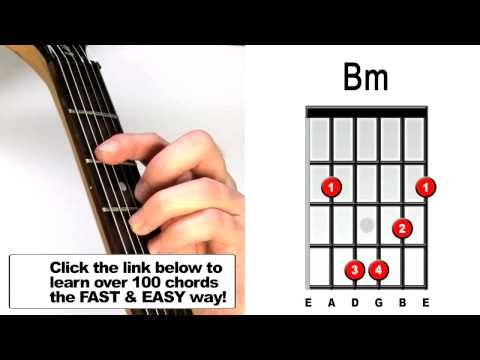 gan.nf.doe.ca
gan.nf.doe.ca
END
Chords List
GuitarUkulele
ritual dance / Interesting / Articles / More / About everything
Not all ritual dances of different nations are lucky to find application in our time. The exception was the national dance of the New Zealand Maori tribe, which they themselves call "haka".
Haka (Maori haka) is a New Zealand Maori ritual dance during which performers stomp their feet, beat their thighs and chest, and shout out an accompaniment.
Haka was performed mainly in the evening for entertainment; there were purely male haka, women's, children's, as well as suitable for adults of both sexes.
Guests were also greeted with this dance. Welcoming dances usually began militantly, since the greeters did not know the intentions of the arrivals.
It was with this militant dance that the armed Maori greeted James Cook in 1769.
The Maori word "haka" means "dance in general" and also "song accompanying the dance". Haka cannot be attributed exclusively to "dances" or "songs": in the words of Alan Armstrong, haka is a composition in which each instrument - arms, legs, body, tongue, eyes - performs its own part.
Haka cannot be attributed exclusively to "dances" or "songs": in the words of Alan Armstrong, haka is a composition in which each instrument - arms, legs, body, tongue, eyes - performs its own part.
There are several different legends about the origin of hack. According to one of them, this dance was first performed by women who were looking for a certain Kae, who killed a whale that belonged to the leader of the tribe. The women didn't know what he looked like, but they knew he had crooked teeth. Kae was among other people, and in order to identify him in the crowd, the women performed a funny dance with comical movements. Seeing the haku, Kae laughed and was recognized.
Christian missionary Henry Williams wrote:
“It is necessary to ban all old customs, dances, singing and tattoos, the main local orgy. In Auckland, people like to gather in large groups to demonstrate their terrifying dances.
Over time, the attitude towards dances on the part of Europeans improved, haku began to be regularly performed during the visits of the royal family.
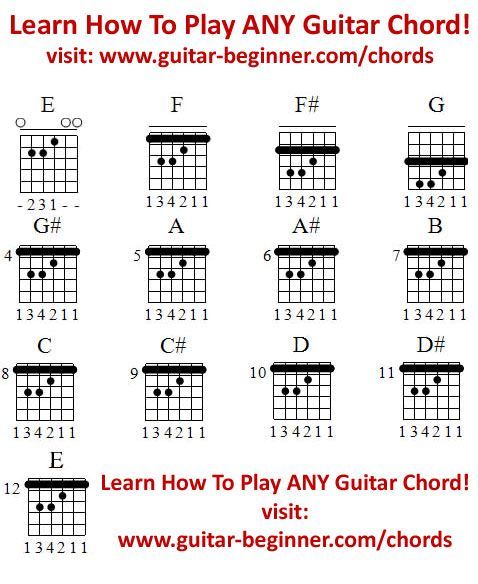
Characteristic details of khaki - the dance is performed simultaneously by all participants and is accompanied by grimaces.
Related...
PolynesiaPolynesia is a gigantic region with a meager amount of land and a small population, the last inhabited on the planet and minimally affecting the judge eyeballs. The grimaces (movements of the eyes and tongue) are very important, and they determine how well the dance is performed.
The women who performed the haka did not stick out their tongues.
Non-military hacks may contain undulating finger or hand movements. The leader of the dance (male or female) calls out one or two lines of text, after which the rest respond in unison with a chorus.
The Maori, the original inhabitants of New Zealand, have always had a rich repertoire of cultural traditions, from myths, legends, songs and dances, to rituals and beliefs. The Haka dance is one of the most famous Maori traditions.
The Haka dance is one of the most famous Maori traditions.
Over 1,500 students perform haka at teacher's funeral
There are several types of dance in the Maori culture:
- Peruperu is a military dance that warriors performed before the battle. Sometimes he was shown to his enemies completely naked;
- Toia Mai - community dance, which was always performed before the general meeting of the Maori;
- Tumoto - dance of rage, which was shown by the war after the defeat in battle;
- Poi - female variety of khaki, more calm and smooth; Horuhoru - dance for men and women;
- Ka-mate is a modern version of khaki for athletes.
The origins of hack lie in the mists of time. The history of dance is rich in folklore and legends. In fact, it can be argued that New Zealand grew up with the haka tradition, going back to the first meeting between Maori and early European explorers, missionaries and settlers.
Although the latest traditions of the dance suggest that the haka was exclusively male, the legends and stories reflect other facts.
The story of the most famous hack - Ka mate - is a story about the power of female sexuality. According to legend, Haka was received from the sun of the god Ra, who had two wives: Hein-Raumati, who was the essence of summer, and Hein-Takurua, the essence of winter.
For most people, haka is a military dance. This is quite understandable because many have seen how the haka is performed before a fight or competition.
Although there are many differences between the types of war dance, the common feature is that they are all performed with weapons. At a time when Europeans had not yet discovered New Zealand, the haka was used as part of the formal process of meeting tribes.
At present, the Maori dance the haka without traditional weapons, but various aggressive and intimidating actions remain in the dance: such as slapping hands on the thighs, active grimaces, sticking out the tongue, stamping the feet, rolling the eyes. These activities are performed along with choral chants and war cries.
These activities are performed along with choral chants and war cries.
In the 21st century, haka is regularly performed in the New Zealand Armed Forces.
Haka at the funeral of a New Zealand Army soldier
Twice a year, since 1972, Te Matatini (Maori Te Matatini) haka competition has been held. Since the end of the 19th century, rugby teams have performed this dance before the competition, in the 2000s this tradition caused much controversy and accusations of the "All Blacks" in the "devaluation" of the haka.
TheHaka has become a symbol of the All Blacks' strength and status in the rugby world. The team leaves the impression of invincibility and cruelty.
Until the early 20th century, New Zealand rugby players almost always beat their opponents on the field. It was believed that this haka gave them such strength.
Since 1892, the New Zealand national team wore only black uniforms, and all team members had to be able to perform Maori ritual dances.
Such behavior has been characteristic of the first New Zealanders since those distant times, when their canoes moored to the island shores.
New Zealand trade delegations and other official representations abroad are increasingly requesting groups of Haka performers to accompany them. It can be undeniably stated that haka has become a unique form of national expression.
A song from 1966 suddenly hooked :) "Train… Open
Caesar Borgia
Cesare (Caesar) Borgia (presumably 1474 or 1475, Rome, Papal States - March 12, 1507, Viana, Kingdom of Navarre) is a Renaissance politician from the Spanish Borgia family. Undertook… Open
Staging a choreographic number using the features of the species diversity of Brazilian folk dance - Informio
Any country on different continents of the world has its own folk dance, its own characteristics. N.V. Gogol in his “Petersburg Notes” gave a description of folk dances: “Look, folk dances appear in different parts of the world: a Spaniard dances differently from a Swiss, a Scot like a Tenier German, a Russian not like a Frenchman, like an Asian. Even in the provinces of the same state, the dance changes. The northern Russian does not dance like a Little Russian, like a southern Slav, like a Pole, like a Finn: one has a speaking dance, the other is insensitive; one is mad, wild, the other is calm; one is tense, heavy, the other is light, airy. Where did such a variety of dances come from? It was born from the character of the people, their life and way of doing things. The people, who have led a proud and abusive life, express the same pride in their dance; among a carefree and free people, the same boundless will and poetic self-forgetfulness are reflected in dances; the people of the fiery climate left the same passion and jealousy in their national dance” [5]. Folk dance in Brazil has its own characteristics, types of dance, manner of performance, nuances of the national costume.
N.V. Gogol in his “Petersburg Notes” gave a description of folk dances: “Look, folk dances appear in different parts of the world: a Spaniard dances differently from a Swiss, a Scot like a Tenier German, a Russian not like a Frenchman, like an Asian. Even in the provinces of the same state, the dance changes. The northern Russian does not dance like a Little Russian, like a southern Slav, like a Pole, like a Finn: one has a speaking dance, the other is insensitive; one is mad, wild, the other is calm; one is tense, heavy, the other is light, airy. Where did such a variety of dances come from? It was born from the character of the people, their life and way of doing things. The people, who have led a proud and abusive life, express the same pride in their dance; among a carefree and free people, the same boundless will and poetic self-forgetfulness are reflected in dances; the people of the fiery climate left the same passion and jealousy in their national dance” [5]. Folk dance in Brazil has its own characteristics, types of dance, manner of performance, nuances of the national costume. The main Brazilian holiday is the carnival, which takes place annually in February or March, begins 40 days before Easter and symbolizes the approach of Lent. The Brazilian carnival officially lasts 5 days, and the 6th day is the main parade of champions. In addition to the parade, carnival festivities include competitions of samba dancers, street processions and festivities. In our country, we can get acquainted with samba dance only at ballroom dance competitions or at concert performances of fitness centers. When studying theoretical sources, it was revealed that there are much fewer works on Brazilian folk dance and various approaches to it in Russian. The manner of performing the national dance does not tolerate falsehood; it must have a characteristic penetrating, expressive and highly artistic performance. Departure from folk traditions and customs, features and national manner of dancing, interferes with the perception of the audience, depersonalizes folk art. At present, this issue is relevant, since in recent decades it has become obvious that a significant number of choreographers working in amateur groups in their productions repeatedly vary the compositional schemes and techniques borrowed from leading masters, replacing the lack of an original staging concept with common clichés, create numbers - Twins.
The main Brazilian holiday is the carnival, which takes place annually in February or March, begins 40 days before Easter and symbolizes the approach of Lent. The Brazilian carnival officially lasts 5 days, and the 6th day is the main parade of champions. In addition to the parade, carnival festivities include competitions of samba dancers, street processions and festivities. In our country, we can get acquainted with samba dance only at ballroom dance competitions or at concert performances of fitness centers. When studying theoretical sources, it was revealed that there are much fewer works on Brazilian folk dance and various approaches to it in Russian. The manner of performing the national dance does not tolerate falsehood; it must have a characteristic penetrating, expressive and highly artistic performance. Departure from folk traditions and customs, features and national manner of dancing, interferes with the perception of the audience, depersonalizes folk art. At present, this issue is relevant, since in recent decades it has become obvious that a significant number of choreographers working in amateur groups in their productions repeatedly vary the compositional schemes and techniques borrowed from leading masters, replacing the lack of an original staging concept with common clichés, create numbers - Twins.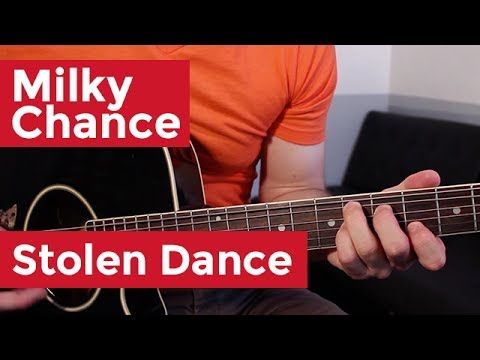 The best traditions turn into stamps. The template "struck" the dances of many peoples - Russian, Moldovan, Spanish, Brazilian and other nationalities. Often this happens because the choreographers take as the basis of their production not an authentic folk sample, but one of its more or less successful stage versions. Spectacular techniques and finds are replicated in the production of any folk dance. As a result, the very essence of the national dance is emasculated.
The best traditions turn into stamps. The template "struck" the dances of many peoples - Russian, Moldovan, Spanish, Brazilian and other nationalities. Often this happens because the choreographers take as the basis of their production not an authentic folk sample, but one of its more or less successful stage versions. Spectacular techniques and finds are replicated in the production of any folk dance. As a result, the very essence of the national dance is emasculated.
The current state of choreographic art is characterized, on the one hand, by an increase in attention to the historical roots of national dance in the activities of leading state art groups, in the work of professional folklore ensembles, and on the other hand, by a well-known stagnation in the repertoire practice of amateur performances.
Because of this, the task of identifying the vocabulary of national folklore and folk dance, movements, steps, gestures and postures of dance performers, the relationship of vocabulary with other components of the dance, and determining its national characteristics for staging a choreographic number is an urgent task.
The Republic of Brazil is the largest country in South America and the fifth largest country in the world. The culture of the countries of South America links the heritage of Europeans, Indians and Africans. South America is called Latin because most of its countries speak one of the three Romance languages - Spanish, Portuguese, French. These languages arose directly from the Latin language of ancient Rome. [one]. Brazil was "discovered" by the Portuguese on April 22, 1500, but the colonization of the country and its "conquest" from the Indians who lived in these territories initially began around 1531. The Portuguese conquerors of Brazil brought with them many slaves from the Congo and Angola, who had to either defend themselves or go inland. With the beginning of the importation of slaves from Africa, great changes took place in the ethnic composition of the Brazilian population. From that moment on, Africans not only became an integral part of the country's population, but, having their own culture, their customs, along with the Portuguese and Indians, they had a great influence on the history of the development of Brazilian folk dance.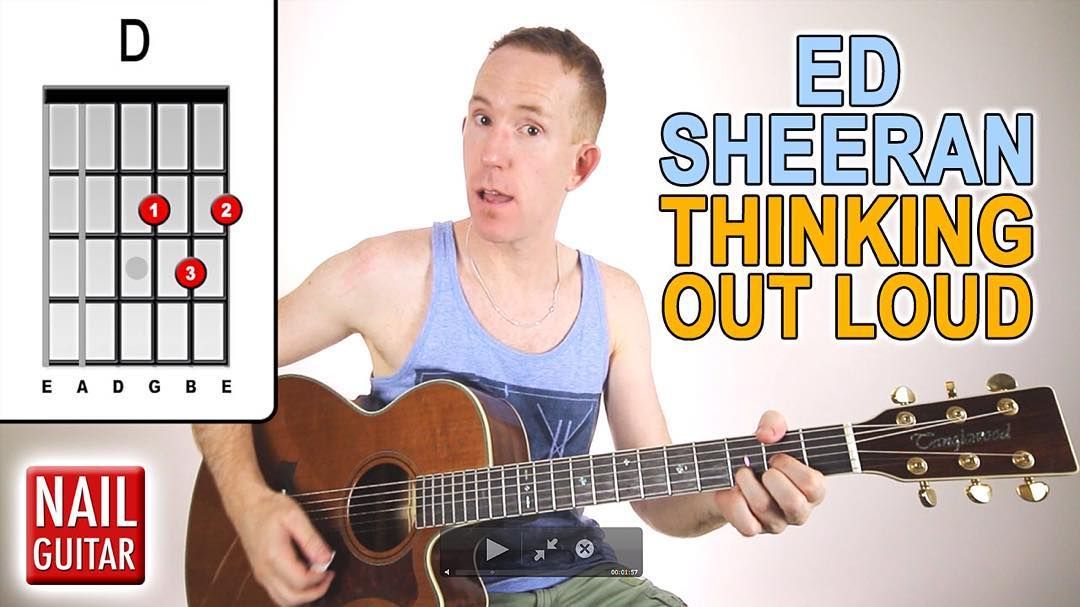
There are many types of Brazilian folk dances. Brazilian folklore dances are magnificent forms of expression of the artistic creativity of the people. They intertwined text, rhythm, costumes and choreography, which reflect the main components of Brazilian culture in their complex relationship. These are tense performances on the theme of the war of the Portuguese with the Indians, as well as theatrical performances. Among the Brazilians, elements of Indian ethnochoreography received large-scale distribution. In such a special dance as zapateado (the name of the dance comes from the Portuguese word "zapatu" - shoe), Portuguese and Indian traditions are closely intertwined. The dancer puts on shoes with a special wooden sole, with which he beats the rhythm with his heels to the sounds of a tambourine. Slow and smooth at the beginning, the dance then becomes fast, rhythmic and is performed until the dancers are completely exhausted.
A special group is represented by the ritual and "magical" dances of black Brazilians. Magical actions are used in various cases: in the manufacture of medicines, in the "treatment" of the evil eye, in case of love failures, financial difficulties. For example, the holiday of Mother Water, originated in the colonial period among blacks - slaves, and was performed in the first weeks of January, with a special bathing in the sea - in case of money problems, they performed the cult of tereiros, in its ceremonies the religious rites of the peoples of Africa and Indians are combined in the most amazing way with popular Catholicism. Previously, tereiro was called the courtyard in front of the hacienda, where slaves were supposed to dance; subsequently, tereiro began to be called any room where religious folk holidays of Negro origin were held. [3].
Magical actions are used in various cases: in the manufacture of medicines, in the "treatment" of the evil eye, in case of love failures, financial difficulties. For example, the holiday of Mother Water, originated in the colonial period among blacks - slaves, and was performed in the first weeks of January, with a special bathing in the sea - in case of money problems, they performed the cult of tereiros, in its ceremonies the religious rites of the peoples of Africa and Indians are combined in the most amazing way with popular Catholicism. Previously, tereiro was called the courtyard in front of the hacienda, where slaves were supposed to dance; subsequently, tereiro began to be called any room where religious folk holidays of Negro origin were held. [3].
Mass dances performed to the musical accompaniment of viols, viola da gamba (bowed musical instrument of the viol family) are very common, and this is complemented by clapping hands. Many dances of the Brazilian Negroes have appropriated the name of those instruments, to the accompaniment of which one or another of them is performed. The names of these dances are most often purely African in origin. Some Brazilian dances are short impromptu scenes from the life of the people. For example, "Shepherd's Dances", of which one can name "Hunter", "Four Directions of the World". In Brazilian dance performances, dancers perform scenes from the life of sailors. [four].
The names of these dances are most often purely African in origin. Some Brazilian dances are short impromptu scenes from the life of the people. For example, "Shepherd's Dances", of which one can name "Hunter", "Four Directions of the World". In Brazilian dance performances, dancers perform scenes from the life of sailors. [four].
The dances of Brazil are many different styles. When highlighting the characteristic features of the Brazilian folk dance types, it was revealed that each type of Brazilian folk dance has its own characteristics.
The Brazilian religion is based on African traditions. The church was the place for the slaves, where they could get at least some opportunity for a short, but still escape from a real, full of hardship, terrible life. Ritual and magical dances include: Marakatu, Kandomle, Makulele.
Maracato is a ceremonial Brazilian dance performed during Carnival and Christmas and has many theatrical elements. The cortege, which consisted of historical characters, is accompanied by a group that plays drums. The very name "maracatu" means "percussion instrument", which only confirms its frantic rhythm with jumps and whirls.
The very name "maracatu" means "percussion instrument", which only confirms its frantic rhythm with jumps and whirls.
Candomle - an old Afro-Brazilian folk dance, musical accompaniment in double meter, sharply syncopated, moving pace. The main thing during the dance is the worship of the Orishas or deities who seem to control the forces of nature. Candomle dancers, mostly women, endlessly repeat monotonous movements during the ritual, as a result of which they fall into a state of trance.
Makulele - pair dance with a machete (wide knife). As a rule, it is performed to the accompaniment of the atabake drum of African origin. The dance is performed barefoot, the movements of the dance are performed for four measures, where for each first or last measure, the dancers hit the machete they hold in their right hands. During the remaining 3 cycles, the machete strikes each other in various ways and can be supplemented by acrobatic elements of varying complexity [6].
Folklore dance is a dance born from the traditions of a part of a country or region.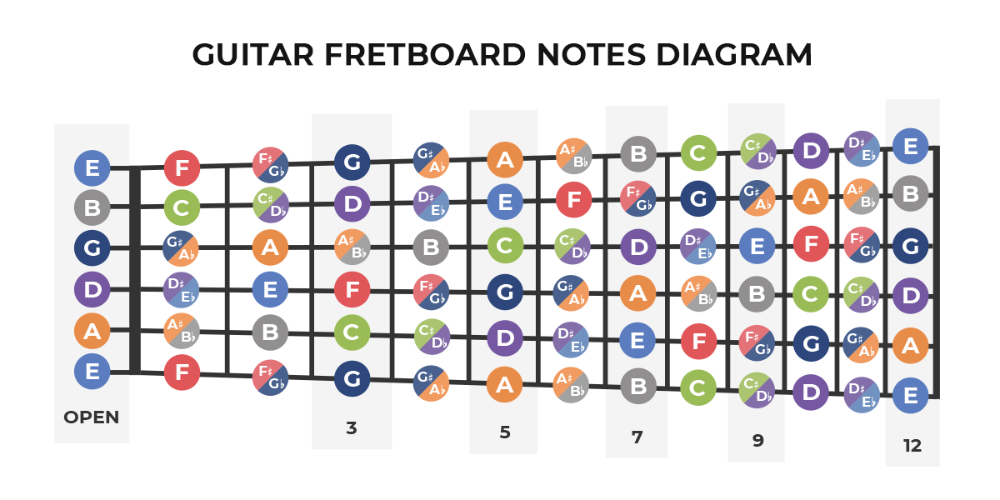 It includes: Carimbo, Lambada, Zouk, Fojo, Lundu, Soltino, Matchish, Capoeira.
It includes: Carimbo, Lambada, Zouk, Fojo, Lundu, Soltino, Matchish, Capoeira.
Carimbo is a sensual dance, performed in pairs, to the drums, which were made from tree trunks. Carimbo is considered a very sensual dance in which a woman tries to envelop her dance partner with her skirt. Sometimes the woman drops the handkerchief on the floor, which must be picked up by her partner's mouth. The dance is characterized by the imitation of dancing animals such as a monkey or a crocodile. When the music begins to play, the men move towards the women and start clapping their hands as a signal for an invitation to dance, after which couples are immediately formed, circling around their axis and at the same time forming a large circle of dancers moving counterclockwise. In the manner of execution, Indian influence can be traced. Carimbo made a significant contribution to the development of another dance form - Lambada.
Lambada is a pair dance. The idea of dance is a triumph of youth, beauty and sensuality. Lambada is danced both on the spot and while moving around the dance floor. Lambada movements have much in common with carimbo, sambo, forro.
Lambada is danced both on the spot and while moving around the dance floor. Lambada movements have much in common with carimbo, sambo, forro.
Matchish, a Brazilian urban couple dance (also referred to by many as "mashiche") is essentially an Afrikonized polka, that is, an Afro-Brazilian style of polka that was brought to Brazil by European immigrants. This is a fun, frivolous dance like the French cancan, which is performed in pairs, cheerfully and naturally, moving around in a circle.
Capoeira is half dance and half martial art, so it is considered very difficult. It was originally performed by African slaves from Angola. The name of the dance comes from the word "sarao", which means painful meaning "castrated rooster". This name describes the dance well, because it is more like a fight between two roosters. Indeed, modern Brazilian capoeira is very close to martial art: in the center of the circle, dancing couples alternately arrange a dance-competition. Capoeira combines elements of acrobatics, games and real fighting techniques. Kicks, sweeps, acrobatics - all this is used during the fight. [2].
Kicks, sweeps, acrobatics - all this is used during the fight. [2].
Mass dance is part of the collective life of people, it makes a person's life cheerful and joyful, they have retained their Indian features. Some of the mass dances are performed to the accompaniment of traditional Negro instruments such as the atabake (large drum) and the aje (an instrument made of clay and shaped like a large vessel). Also important is the reco-reco - a Brazilian musical instrument in the form of a hollow cylinder. Mass dances include: Samba, Forro, Frevo, Siranda, Batuk, Embolada.
Samba is a colorful mixture of Negro and European rhythms, an incendiary, temperamental, and at the same time sensual dance, a hymn to love, youth and beauty. A large role in samba is given to rhythm, and this rhythm is “generated” by the hips of the dancers. After all, samba is characterized by springy movements of the hips, which are called “Samba Bounce”. This impulsive dance exactly conveys the character of the expressive southern people: sometimes soft and dreamy, sometimes bold and temperamental [4].
Forro is a pair dance. Partners during the dance are close to each other. The man holds the girl by the waist with his right hand, and with her left by her hand. The woman with her left hand holds the man by the neck, maintaining contact with him. The legs in the dance are located at some distance.
There are three main rhythms in forro dance: slow xote (shochi), original baião (baiao) and fast arrasta-pé (arrasta-pe).
There are also many dance styles that vary by area and may be known by different names in different places.
Quadrilha - the leader shouts out certain commands that the participants in the dance must perform, and also shows by example what is required of the participants.
Frevo was inspired by the movements of capoeira (Brazilian martial art) and has over 120 different movements. Examples of common movements in this dance include jumping, coordinated quick leg movements, leg curls, and somersaults. Those who perform the frevo wear bright clothes and when they dance they use small umbrellas [3].
Siranda is a group dance in which there are no prejudices regarding gender, skin color, age, social status and financial status, just as there are no restrictions on the number of participants. It begins with a small round dance that grows larger as new members begin to dance, breaking the round dance and joining hands with those who are already dancing.
Embolada, a dance depicting a cow with balloons on its horns for safety. It is a circle dance with Charleston-like steps. A complex dance formed by combining the movements of these dances with additional swings of the body and hips was called Lundu in the 1830s. Later, steps taken by participants in the carnival in Rio were introduced into the dance, which were called Copacabana (the name of the beach near Rio de Janeiro). Gradually, the high society of Rio de Janeiro also began to dance this dance, although it was modified to allow dancing in a closed dance position [5].
When starting to work on a choreographic work based on folk dances, the director must get acquainted with the history of the people, the geographical location, the musical material and the national characteristics of the country.
When working with theoretical material on identifying the features of the species diversity of Brazilian folk dance, the choreographer gets acquainted with the types (ritual, folklore and mass) of Brazilian dances and their characteristics. In all types of Brazilian dance, common movements are used: rotational movements of the hips; men dance on the whole foot, and women on their toes; the partner starts the movement with the right foot, and the girl with the left, and ends, on the contrary, the girl with the right foot, and the partner with the left. The dancers make movements, leaning slightly forward and following the moving feet, clearly setting a bright and seductive rhythm. Also, the basis of these dances is: the basic step - the movement of a couple along one line; simple turn - turn of the partner when leading the partner; bonus - disclosure of the pair with the subsequent turn of the partner; lateral - the steps of the pair along the trajectory of the oval opposite each other; viradinha - going into a semicircle with a subsequent return to the basic step; lunge - exit from the lateral movement to the side with the subsequent turn of the partner. These movements need to be used depending on the stage option that you want to take.
These movements need to be used depending on the stage option that you want to take.
When staging a choreographic number using the features of Brazilian folklore dances, the choreographer must pay attention to the choice of theme and the preservation of the folklore source. A feature is the image of animals. The musical accompaniment of these dances is a drum, an accordion, as well as playing the guitar, piano and percussion, sometimes playing along with castanets. Compositional construction in folklore dances: in cases of pair dance, the performance begins with the formation of two chains of men and women, facing towards the center of the circle. When the music begins to play, the men move towards the women and start clapping their hands as a signal for an invitation to dance, after which couples are immediately formed, circling around their axis and at the same time forming a large circle of dancers moving counterclockwise. The figures can be danced in any order.
To stage a choreographic number using the features of ritual dances in Brazil, the choreographer must know that these dances are performed in carnival costumes, which depict the king, queen, princess and ambassadors. The vocabulary of ritual dances includes: jumping and whirling, there are acrobatic elements. Ritual dances are performed to the accompaniment of a drum.
The vocabulary of ritual dances includes: jumping and whirling, there are acrobatic elements. Ritual dances are performed to the accompaniment of a drum.
To stage a choreographic number using the features of mass dances in Brazil, the choreographer must pay attention to the content of the song to which the performance will be performed. Dances are performed to the accompaniment of a drum, pandeiro, tantana. The vocabulary of mass dances includes movements: springy movements of the hips; soft plastic elements are combined with sharp and intermittent ones; many linings; in pair dances, men hold the girl with their right hand by the waist, and with their left hand by her hand. The girl holds her partner by the neck with her left hand; there is improvisation. Compositional construction: choreography depicts what is sung in music; the dance begins with a small round dance, which increases as new participants begin to dance; a line formation of dancers who make small advances, dance styles change under different names in different places.
Any Brazilian dance movements can be developed into more complex combinations. All other, more complex combinations are built on their basis and with their help, as they are used as connecting links. The unique style of each Brazilian dancer can be created on the basis of special and careful study.
When performing a production using the characteristics of the species diversity of Brazilian folk dance, it is important to remember that the manner of performing Brazilian dances is divided into male and female styles. Male style is how the partner treats the partner, what movements he uses. Through a partner, he embodies both himself (building the architecture of the dance) and her (allowing the partner to reveal her femininity). Women's style implies a lot of solo directions, plastic is very important. Women's style is worked out separately to develop the technique. Without this, the chances of success are almost zero. The same movement performed by different girls will look completely different.
